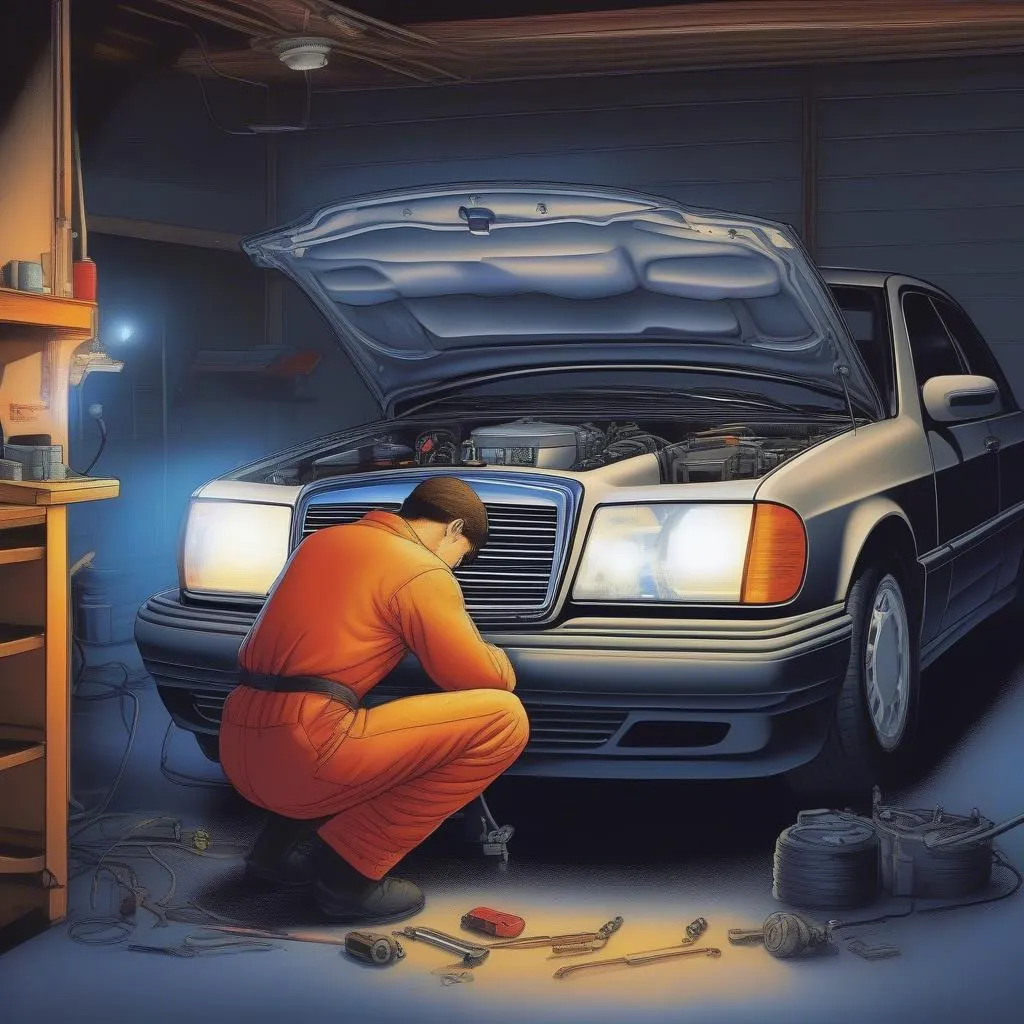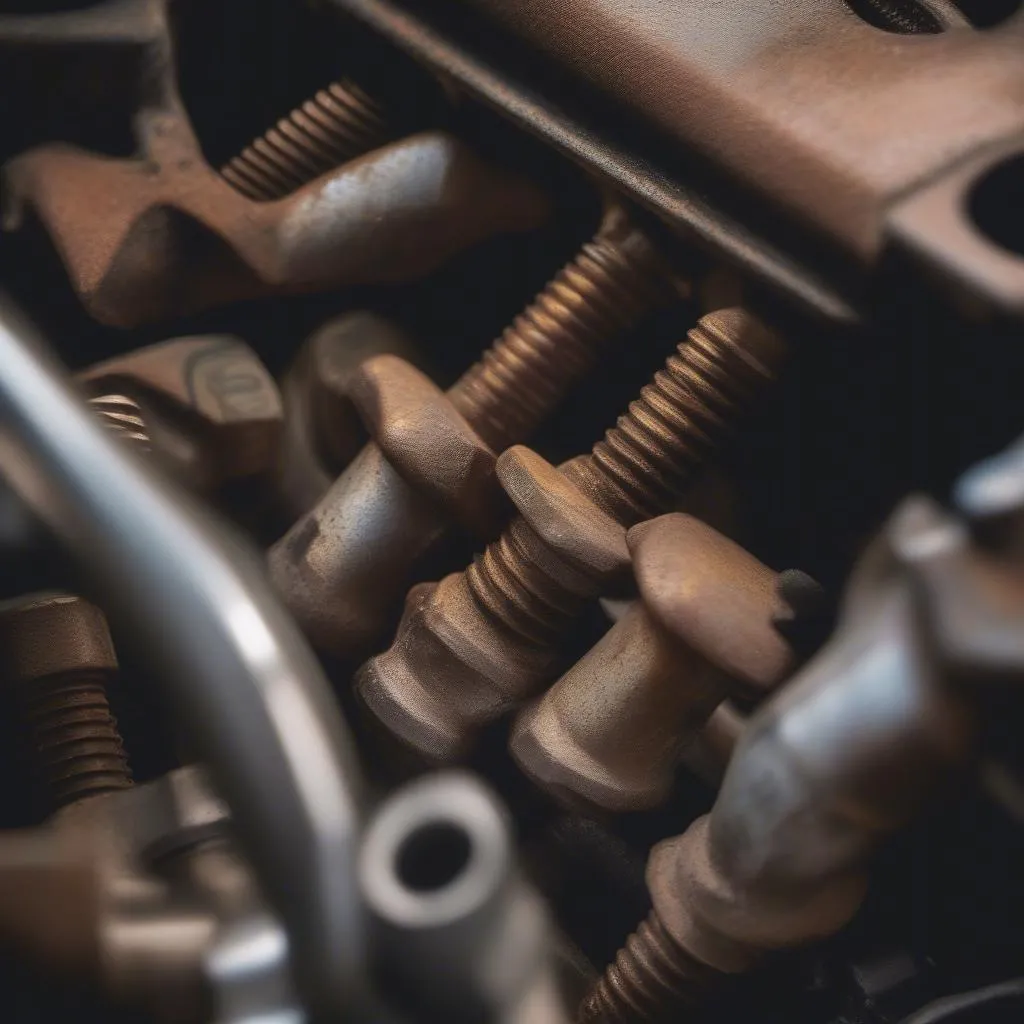The check engine light on your 1994 Mercedes E320 can be a source of frustration and anxiety. What does it mean? Is it a minor issue or a sign of a major problem? This comprehensive guide will help you understand what triggers the check engine light on your E320 and provide you with steps to diagnose the problem.
Understanding the Check Engine Light
Your E320’s check engine light, part of the Onboard Diagnostics I (OBD-I) system, is designed to alert you to potential issues within the engine and emissions control systems. When the light illuminates, it means the ECU (Engine Control Unit) has detected a problem.
Here’s what the check engine light could mean:
- Steady On: A problem, potentially impacting emissions or fuel economy, requires attention.
- Flashing: Indicates a serious issue requiring immediate attention to prevent severe engine damage.
 Dashboard of a 1994 Mercedes E320 with the check engine light illuminated
Dashboard of a 1994 Mercedes E320 with the check engine light illuminated
Common Causes of Check Engine Light in a 1994 E320
While numerous issues can trigger the check engine light, some are more common in the 1994 E320:
- Oxygen Sensor Failure: The oxygen sensor monitors exhaust gases to optimize the air-fuel mixture. Failure can lead to decreased fuel efficiency and increased emissions.
- Mass Air Flow (MAF) Sensor Malfunction: The MAF sensor measures the air entering the engine. A faulty MAF sensor disrupts the air-fuel mixture, causing poor performance, stalling, or rough idling.
- Spark Plug or Wire Issues: Worn-out spark plugs or wires can lead to misfires, reducing engine performance and potentially damaging the catalytic converter.
- Catalytic Converter Problems: The catalytic converter reduces harmful emissions. If faulty or clogged, it can trigger the check engine light and hinder engine performance.
- Vacuum Leaks: Leaks in the vacuum system can disrupt various engine functions, leading to rough idling, poor performance, and increased emissions.
- EVAP System Issues: The Evaporative Emission Control (EVAP) system prevents fuel vapor release. A leak or malfunctioning component can trigger the check engine light.
 Mechanic inspecting the engine bay of a 1994 Mercedes E320
Mechanic inspecting the engine bay of a 1994 Mercedes E320
Diagnosing the Check Engine Light
Before rushing to a mechanic, there are steps you can take to diagnose the issue:
1. Visual Inspection
- Check for Loose Connections: Inspect all wiring and connections around the engine for looseness, damage, or corrosion.
- Examine Vacuum Hoses: Look for cracks, splits, or disconnections in the vacuum hoses.
2. OBD-I Code Retrieval
The 1994 E320 uses a 16-pin diagnostic connector usually located under the hood. You’ll need an OBD-I scanner (or a paperclip to jump specific pins) to retrieve the trouble codes stored in the ECU.
How to Retrieve Codes:
- Locate the diagnostic connector.
- Using a scanner or a paperclip, jump the appropriate pins (refer to your vehicle’s service manual).
- Turn the ignition to the “On” position without starting the engine.
- Observe the check engine light’s flashing sequence to identify the trouble codes.
 An OBD-I scanner connected to a 1994 Mercedes E320
An OBD-I scanner connected to a 1994 Mercedes E320
3. Code Interpretation
Once you have the codes, consult a reliable source like your vehicle’s service manual, a reputable online database, or a trusted mechanic to understand their meaning.
4. Address the Issue
Based on the code interpretation and your diagnosis, address the problem. This might involve replacing a faulty sensor, fixing a vacuum leak, or addressing a more complex issue.
FAQs about 1994 Mercedes E320 Check Engine Light
Q: Can I drive my car with the check engine light on?
A: While you might be able to drive short distances, it’s crucial to get the issue diagnosed and repaired as soon as possible. Driving with a flashing check engine light can lead to severe engine damage.
Q: Will disconnecting the battery reset the check engine light?
A: Disconnecting the battery might temporarily reset the light, but it won’t address the underlying problem. The light will reappear if the issue persists.
Q: How often should I get my 1994 E320’s engine checked?
A: Regular maintenance, including annual or bi-annual engine inspections by a qualified mechanic, is essential for preventing and addressing potential issues.
Conclusion
The check engine light is a valuable tool for keeping your 1994 Mercedes E320 running smoothly. Understanding its meaning and taking prompt action can save you from costly repairs and ensure a safe and efficient driving experience. Remember, a well-maintained car is a happy car!
Need help diagnosing your car troubles? Connect with CARDIAGTECH for advanced automotive diagnostic tools and expert support.


